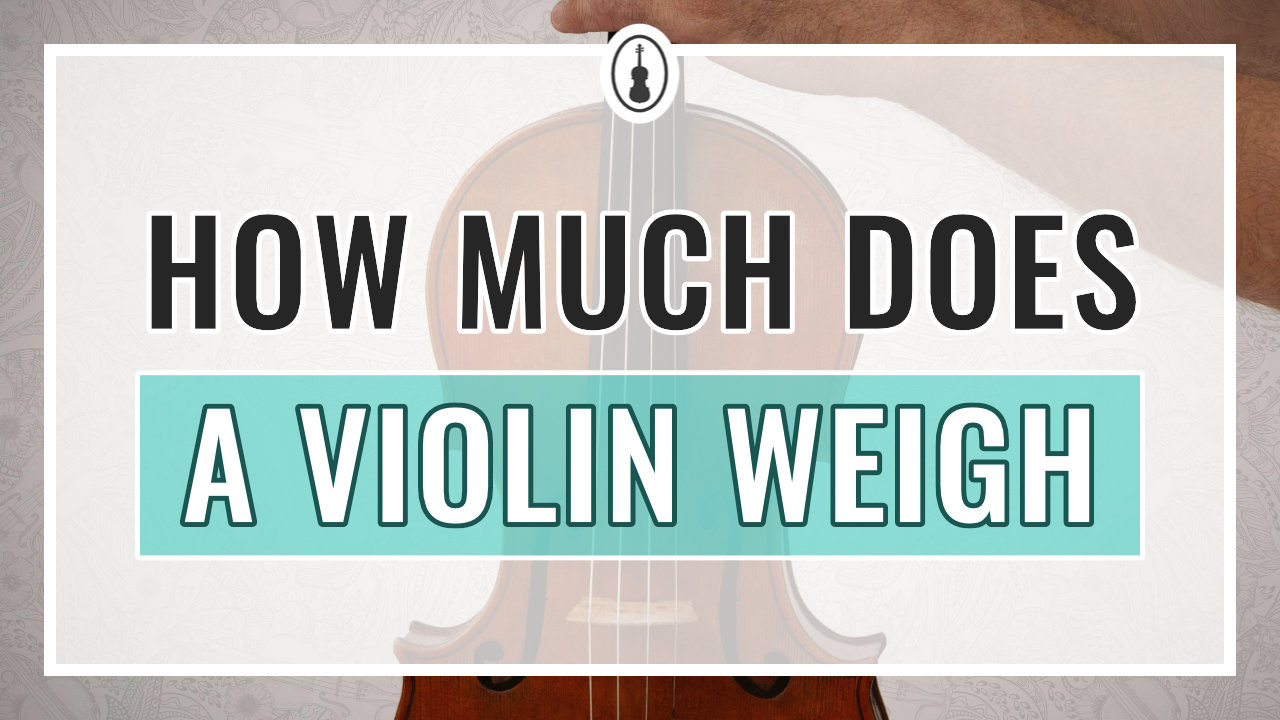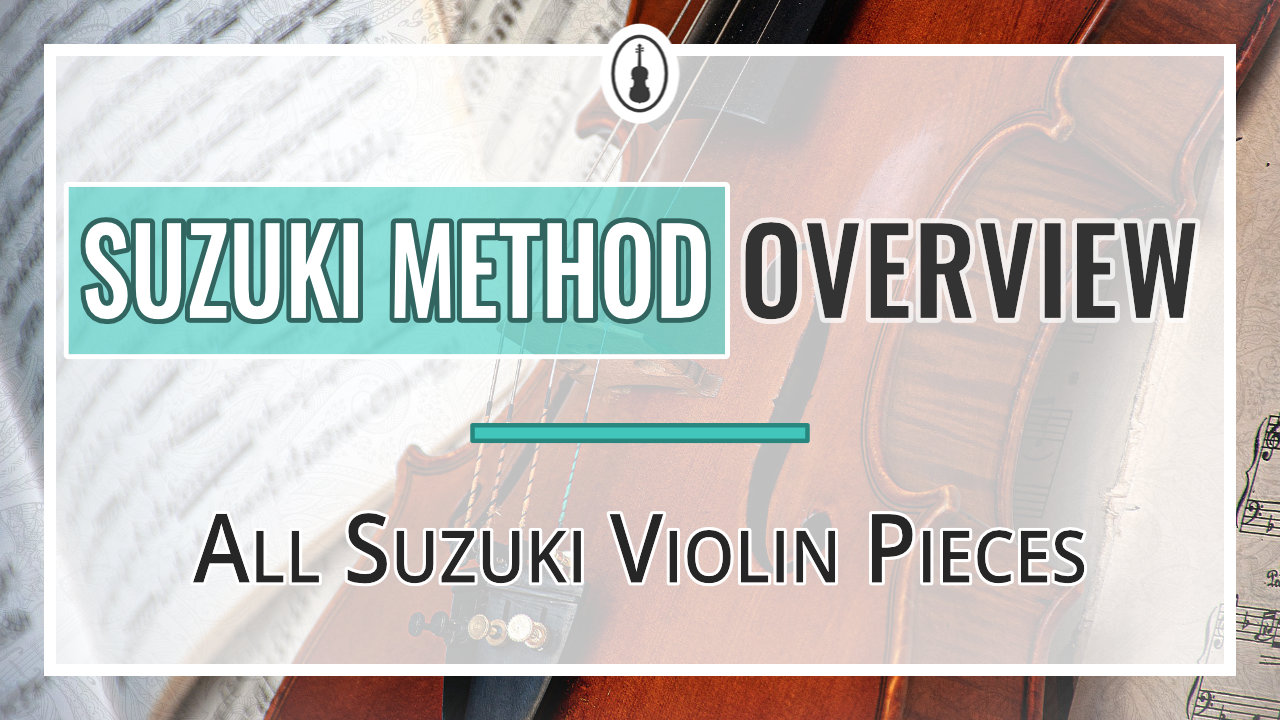Traveling with a violin isn’t always easy. Maybe you’ve felt that tight knot in your stomach while standing at the boarding gate, wondering if the airline will let your instrument on board. You’ve probably searched for hours through airline policies, only to find vague or confusing answers.
I know the feeling—because I’ve been there too!
Years ago, I was flying from the Netherlands to the United States with my violin and I had chosen a budget airline to save money. When I got to the gate, the staff looked at my violin case and said, “That’s too big to bring on board.” I tried to explain and showed them the airline policy, but they still insisted it needed to go in the hold. In the end, I had to rearrange my luggage on the spot, stand my ground politely, and luckily—after a tense few minutes—they let it through.
Since then, I’ve learned a lot about traveling with a violin, and today I’ll walk you through the most important things to know, especially if you’re flying.
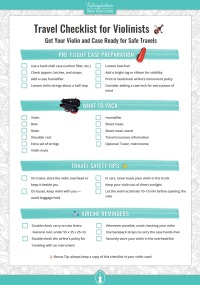
Travel Checklist for Violinists
Get Your Violin and Case Ready for Safe Travels

Can You Bring a Violin on a Plane?
In most cases, you can take your violin as carry-on luggage, but it depends on the airline.
Many major airlines allow violins in the cabin as long as they fit in the overhead bin. But budget airlines, especially in Europe, can be more strict. Some won’t allow violins at all unless you buy an extra seat. Others don’t accept instruments in the hold due to safety concerns.

Below are a few of the most popular airlines and their policies on bringing a violin as a carry-on:
Violin Carry-On Policies by Airline
Airline
Policy Summary
British Airways
Allows musical instruments under 80 cm in length to be carried in the cabin as part of your hand baggage allowance. Larger instruments may require special arrangements.
Lufthansa
Permits small musical instruments as carry-on baggage, provided they meet standard size and weight restrictions. The instrument counts as your carry-on item.
KLM
Small instruments like violins can be brought on board as hand luggage if they do not exceed 55 x 35 x 25 cm. Larger instruments may require purchasing an extra seat.
Air France
Musical instruments smaller than 115 cm (height + length + width) are considered standard baggage and can be taken into the cabin. Larger instruments may require special arrangements.
Ryanair
Instruments that fit within your cabin bag allowance can be carried on board. For larger instruments, you can buy an extra seat by entering “EXTRA ITEM SEAT” during booking.
easyJet
Allows instruments up to 30 x 117 x 38 cm in the cabin if you have purchased an “Up front” or “Extra legroom” seat. Larger instruments may require an additional seat.
United Airlines
Small musical instruments can be carried on board if they fit in the overhead bin or under the seat. If space is unavailable, the instrument may need to be checked.
Delta Air Lines
Accepts small musical instruments as carry-on items if they fit in the overhead bin or under the seat. If space is limited, the instrument may need to be gate-checked.
American Airlines
Musical instruments must fit in the overhead bin or under the seat in front of you to be carried on board. Larger instruments may require special arrangements or checking.
How to Fly with a Violin
Here are a few tips to make flying with your violin as safe and smooth as possible.
Use a sturdy travel case
Pack your violin in a case that offers solid protection, is lightweight, and easy to carry.
Look for a hard case made of materials like carbon fiber, polycarbonate, or fiberglass. These absorb shock and protect against pressure, which can shield your violin in overhead bins or crowded luggage racks.
Heavy cases can be difficult to transport around airports and hotels; but ultra-lightweight cases don’t always offer enough protection. Many of my favorite violin cases are a good balance of protection and portability.
Browse my favorites to find your next travel case!
One of them is the 2003XLW Cabin by bam – the smallest violin case available and super-lightweight.
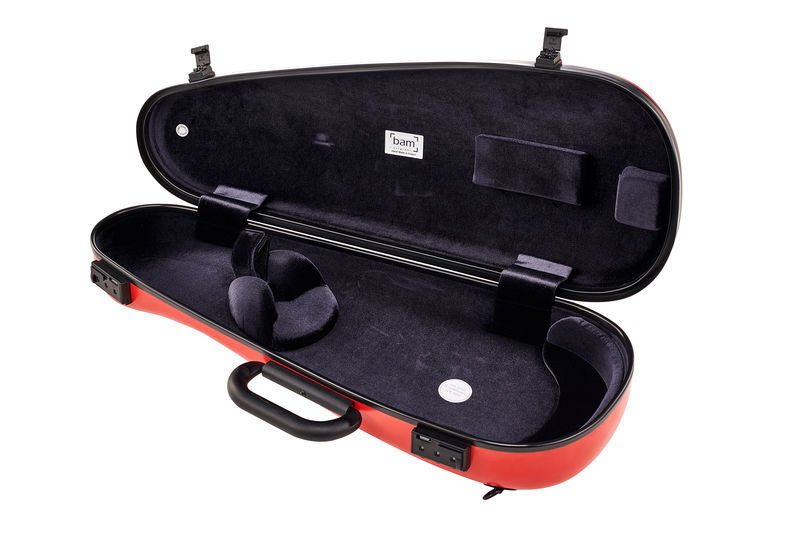
bam 2003XLW Cabin Violin Case
Support us for more FREE content No extra costs for you Recommended by Violinists
When you’re out and about, wearing your violin as a backpack frees up your hands for other luggage and your boarding pass. Another great feature to look for in a travel case is a lock. While locks on violin cases aren’t the most secure, locking your case offers peace of mind and can help the case stay closed during your journey.
Add a humidifier
Cabin air is dry, and long flights can cause your violin to lose moisture. A small case humidifier (like a Dampit or Boveda pack) helps protect the wood and prevents cracks.

Learn more about violin humidifiers here!
Loosen the strings
Before flying, it’s a good idea to loosen the strings on your violin by about a half step.
During a flight, your violin will experience changes in temperature and air pressure. These changes can cause the wood to expand or contract, which puts extra tension on the instrument. If your strings are too tight, that extra pressure can increase the risk of cracks in the wood, especially around the bridge or soundpost area.
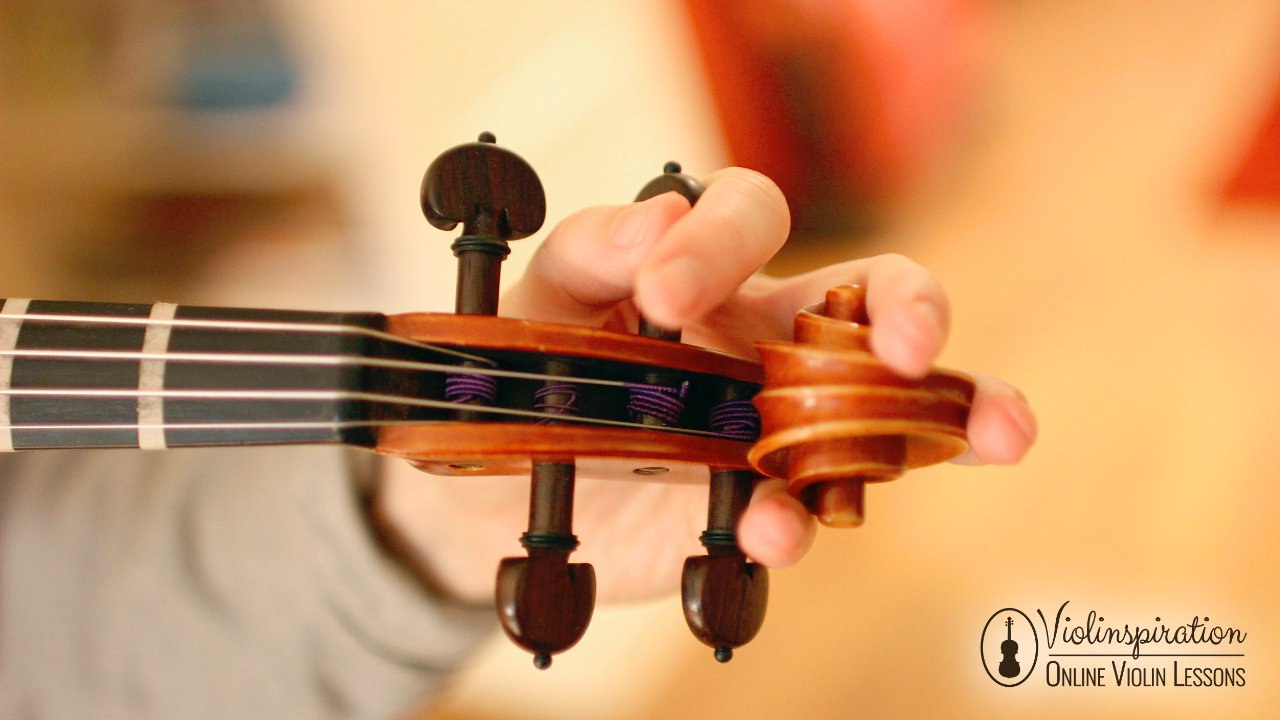
You don’t need to loosen the strings completely—just enough to take off a bit of tension. A good rule of thumb is to turn each peg about a half-turn backward. The strings should still hold their shape, but feel more relaxed.
Double-check your bow before you leave for the airport, and loosen the hair until there’s a slight curve in the stick, as you would after any practice session.
Once you arrive, let your violin rest at room temperature for a little while before tuning it up again. This gives the wood and strings time to settle and adjust naturally to your new environment.
Add a bright tag or ribbon
Have you ever left your violin behind after a rehearsal or performance? You certainly don’t want that to happen on public transport!
Tie a colored ribbon or label to your violin case. Add a matching one to your wrist or bag as a reminder so you don’t leave your instrument in a taxi, train, or lounge. It’s better to look a little silly than to forget your precious instrument!

Print airline policies
Keep a printed copy of your airline’s instrument policy in your case or even your pocket. If there’s ever a question at the gate, you’ll have something to show.

Traveling With a Violin By Train, Bus, or Car
Here are some tips and tricks I’ve learned along the way for traveling by land.
Train travel
Train travel is often one of the easiest ways to commute with your violin. Most train companies don’t have strict rules about instruments, and you can usually keep your violin close by.
You can almost always store your violin in the overhead rack, as long as you can find a secure spot. If the rack is full of other passengers’ luggage, your case could get bumped around or crushed. If you’re worried, keep your violin beside you or sit it vertically between seats.
Keep an eye out during transfers so that your violin stays in place. It could easily get knocked around or even stolen. When in doubt, keep your violin close to you. Using a backpack-style case is great for travel because your violin becomes part of your body. You don’t have to worry about sitting it down and forgetting about it when it’s strapped to your back!
Train staff usually won’t question your violin at all, but it’s still a good idea to pack with protection in mind, just in case your case needs to rest near other passengers’ bags.

Bus travel
Traveling by bus, especially in Europe, can be convenient and affordable, but there’s often less space and stricter baggage rules than on trains.
Contact the company ahead of time. Long-distance bus services sometimes have size limits for cabin baggage. Some allow musical instruments inside the bus, but others may ask you to place them in the luggage compartment below, something you’ll want to avoid if possible.
If your case is compact and fits within the hand luggage size, most drivers will let you bring it with you. Politely ask if you can keep your instrument with you. Letting them know it’s fragile and valuable can help.

The luggage compartments underneath the bus are not temperature-controlled and often get packed tightly. There’s a risk of damage from heat, cold, or heavy suitcases shifting during the trip. Avoid storing your violin in this compartment if you can!
Stay alert during the trip. Buses can make quick stops with little warning, and it’s easy to leave something behind in a rush. Keep your violin close and always double check that you have all your belongings before stepping off.
Car travel
Traveling by car gives you more control over your schedule and environment, which is great for transporting a violin. But there are still a few things to keep in mind for a smooth experience.
Never leave your violin in the trunk. The temperature in the trunk can rise or drop quickly, especially in the summer or winter. Sudden temperature changes can cause cracks in the wood or loosen the glued joints. Instead, keep your violin inside the car with you.
If the sun is shining through the window onto your case, the inside can heat up fast. Store your violin on the floor of the back seat, or use a light cloth to cover the case and block it from direct sunlight. Avoid leaving your violin in the car unattended, especially on warm days. The temperature can climb quickly, even in mild climates.
Keep your case secured either by wedging it gently in place between the seats or by strapping it in with a seatbelt to keep it in place.
After a long drive, especially if it’s hot or cold outside, give your violin 10–15 minutes to acclimate before opening up your case.

Traveling with a violin can feel nerve-wracking, but as long as you prepare ahead of time and calmly stand up for yourself, you and your violin will make it to your destination in one piece.
Free printable: Travel Checklist for Violinists
Want a quick reminder for your next trip?
Download my free travel checklist, perfect for printing and keeping in your violin case. It includes:
- Pre-flight case prep
- What to pack
- Travel safety tips
- Airline reminders
Click here to download the free violin travel checklist.

Travel Checklist for Violinists
Get Your Violin and Case Ready for Safe Travels
Free Violin Sheet Music in Your Inbox
Subscribe to my mailing list to receive free sheet music, playing tips, a weekly portion of motivation, and never miss a new video or course I release!












